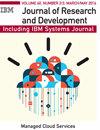Understanding requirements and issues in disaster area using geotemporal visualization of Twitter analysis
IF 1.3
4区 计算机科学
Q1 Computer Science
引用次数: 1
Abstract
During disasters, requirements and situations on the ground change very rapidly. Moreover, they depend on timing and location; thus, it is very hard to understand them in a timely manner. Social media may contain such information with the posted time and the location information. However, it is difficult to extract situational requirements from numbers of conflicting sources. In this article, we propose a system that enables us to find out such useful information from social media and visualize it to understand the data easily. The system is divided into two steps. The first step is to extract requirements and issues from textual data, such as “We cannot buy gas here” or “We are short of batteries,” using natural language processing (NLP) technologies. The system also uses NLP to extract geolocation information, such as city names and location landmarks. The second step is to visualize the results in a timely and geolocated manner. We show the system results with using real Twitter data from the Kumamoto Earthquake in 2016. By visualizing the information, the personnel in the disaster area, such as the local governments and/or volunteer organizations, can utilize this information very effectively. For instance, they can decide how to distribute food and water in the disaster area and also how to implement and responsed to their logistics.使用Twitter分析的实时可视化来理解灾区的需求和问题
在灾害期间,当地的需求和情况变化非常迅速。此外,它们还取决于时间和地点;因此,很难及时理解它们。社交媒体可以包含具有发布时间和位置信息的这样的信息。然而,很难从大量相互冲突的来源中提取情境需求。在这篇文章中,我们提出了一个系统,使我们能够从社交媒体中找到这些有用的信息,并将其可视化,以便轻松理解数据。该系统分为两个步骤。第一步是使用自然语言处理(NLP)技术从文本数据中提取需求和问题,例如“我们不能在这里购买天然气”或“我们缺少电池”。该系统还使用NLP来提取地理位置信息,例如城市名称和位置地标。第二步是以及时和地理定位的方式将结果可视化。我们使用2016年熊本大地震的真实推特数据展示了系统结果。通过可视化这些信息,灾区的人员,如地方政府和/或志愿者组织,可以非常有效地利用这些信息。例如,他们可以决定如何在灾区分配食物和水,以及如何实施和响应他们的物流。
本文章由计算机程序翻译,如有差异,请以英文原文为准。
求助全文
约1分钟内获得全文
求助全文
来源期刊

IBM Journal of Research and Development
工程技术-计算机:硬件
自引率
0.00%
发文量
0
审稿时长
6-12 weeks
期刊介绍:
The IBM Journal of Research and Development is a peer-reviewed technical journal, published bimonthly, which features the work of authors in the science, technology and engineering of information systems. Papers are written for the worldwide scientific research and development community and knowledgeable professionals.
Submitted papers are welcome from the IBM technical community and from non-IBM authors on topics relevant to the scientific and technical content of the Journal.
 求助内容:
求助内容: 应助结果提醒方式:
应助结果提醒方式:


